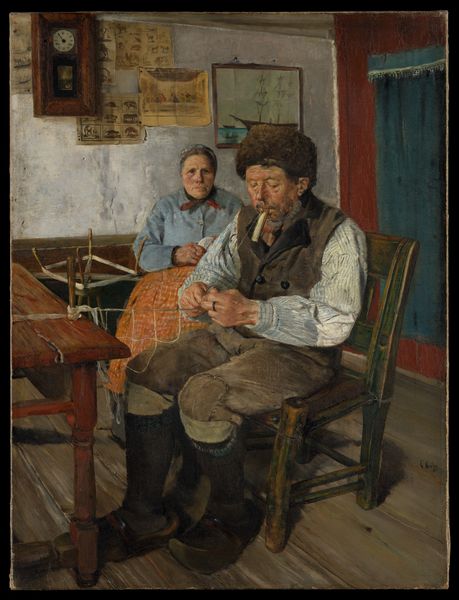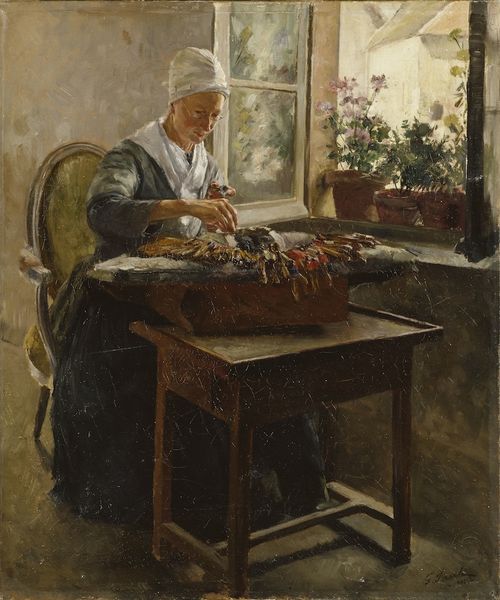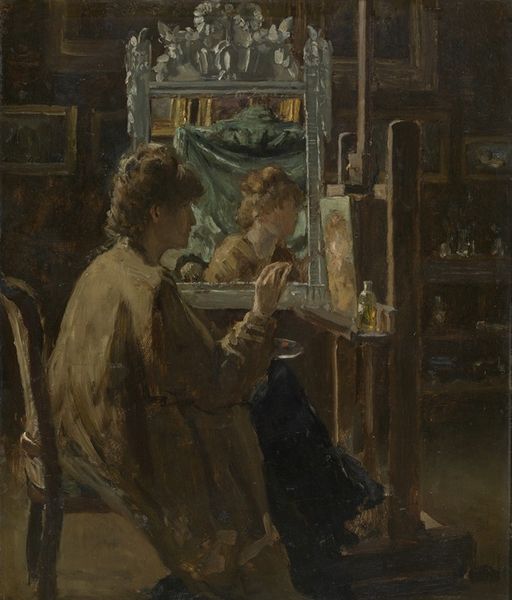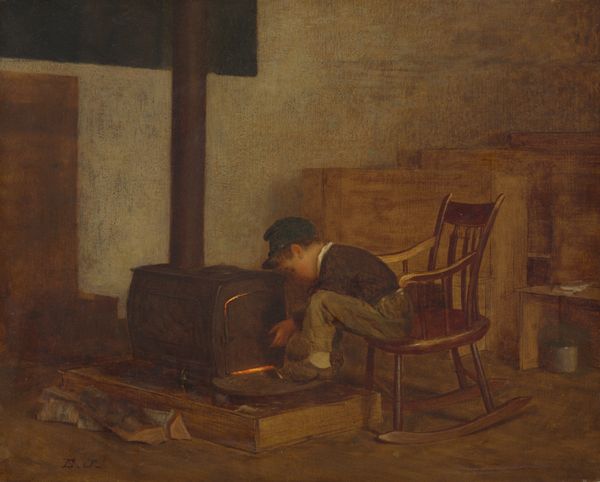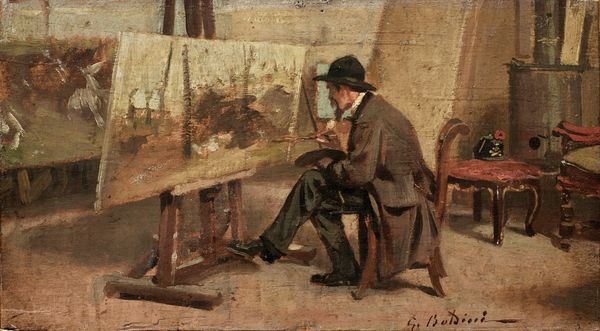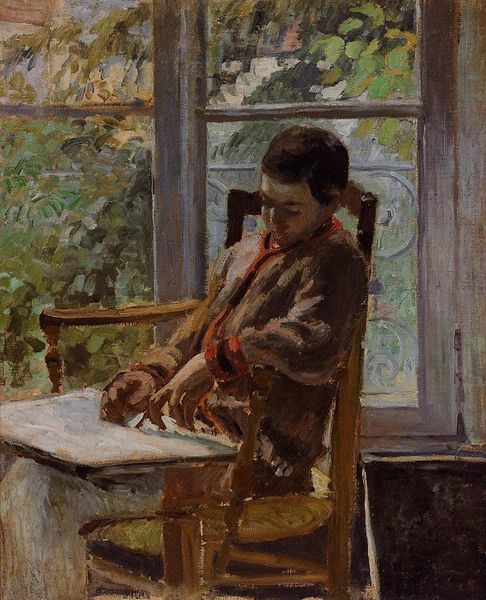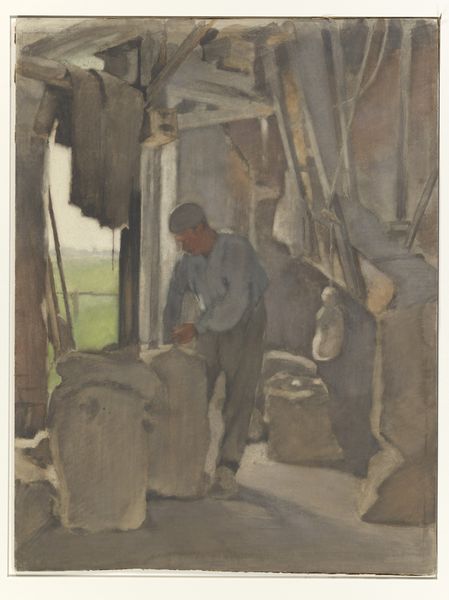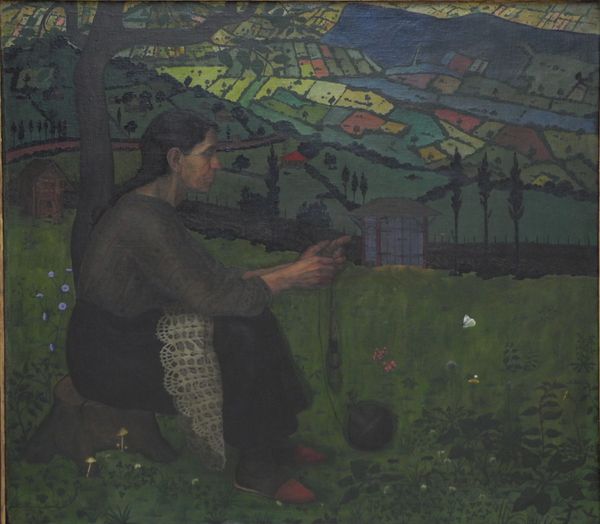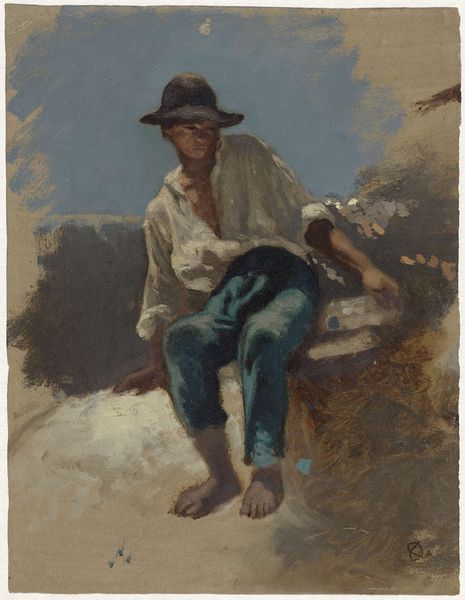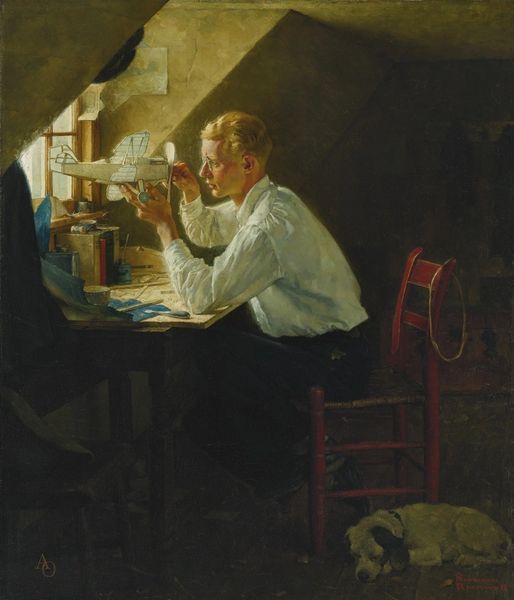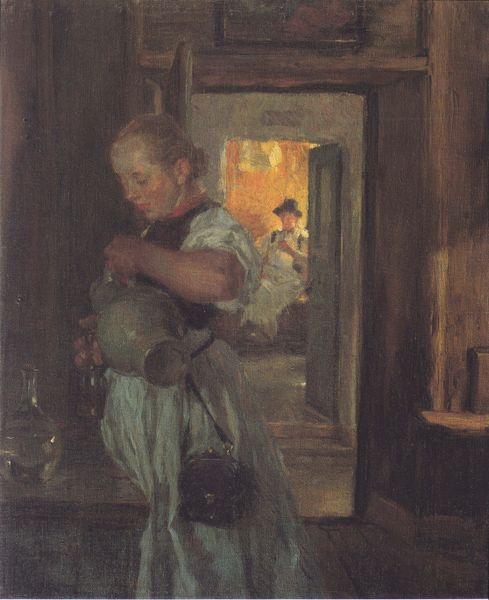
painting, oil-paint
#
portrait
#
painting
#
oil-paint
#
landscape
#
oil painting
#
genre-painting
#
portrait art
#
watercolor
#
fine art portrait
#
realism
Copyright: Dobri Dobrev,Fair Use
Editor: So, here we have Dobri Dobrev's "Morning Song" from 1932, an oil painting that depicts a boy playing the flute on a porch, overlooking what looks like a landscape. It has a quiet, peaceful quality to it. What strikes you most when you look at it? Curator: What is immediately apparent is Dobrev’s manipulation of light and form. Observe how the morning light rakes across the wooden slats of the porch, creating a series of strong diagonal lines that lead the eye upward towards the figure. Do you notice how that pattern is repeated in the blue lines of his shirt? Editor: Yes, now that you mention it, the parallel lines definitely create a rhythm. But is the painting merely a formal exercise? What does it all mean? Curator: Let's not immediately jump to meaning before exhausting formal analysis. Consider the color palette. Dobrev primarily utilizes earth tones - browns, creams, muted blues - which provide a sense of grounding and tranquility. However, the brilliance of the distant view gives depth to the piece, and creates a balanced opposition, wouldn’t you say? Editor: I see what you mean about the grounding. The color choices really emphasize the ordinary, almost mundane quality of the scene, even though he's clearly pretty skilled technically. Curator: Precisely! The subject matter, a boy playing a flute, might traditionally lend itself to sentimental interpretations. But consider instead the structural tension created by the figure’s placement against the rigid verticals and horizontals of the architecture. Editor: So, rather than focusing on narrative or symbolic interpretations, we should look at the formal relationships at play? Curator: Exactly. It's how the formal components create the impact. In this painting, that balance allows Dobrev to successfully transform a simple image into a memorable moment. Editor: That's a really interesting approach. I was so focused on the scene itself, that I missed how the composition does so much of the work. Thanks!
Comments
No comments
Be the first to comment and join the conversation on the ultimate creative platform.

